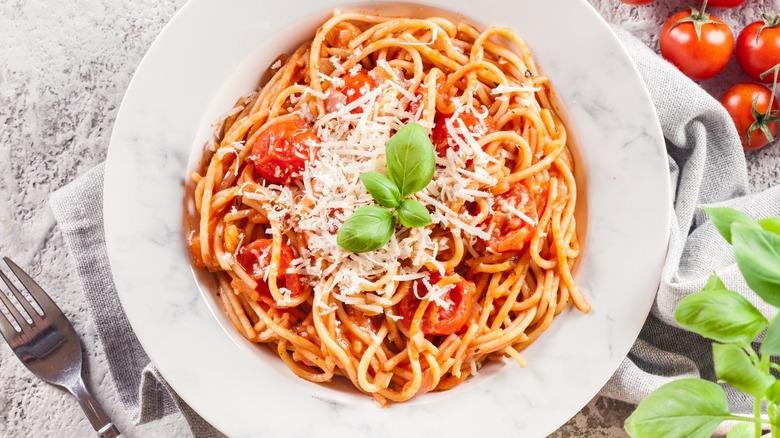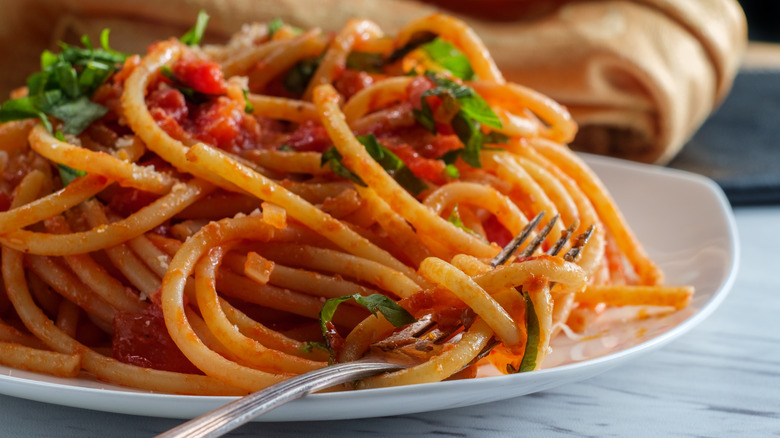Where Spaghetti Was Actually Invented
Did you know January 4th is National Spaghetti Day? Okay, so a quick scroll through the website National Today shows that every day is national something-or-other day, and most of those somethings seem to be a type of food. Many of these are oddly specific, though (National Blueberry Popover Day?) while others, shall we say, lack universal appeal (sorry, Eat Brussels Sprouts Day and National Licorice Day). A big plate of spaghetti all covered with cheese, though, sounds like just the thing on a cold January day, so this is one national day that's well worth observing.
After we tuck into our celebratory spaghetti, we may want to send a brief message of thanks back through the centuries to whoever invented this delicious dish. Just who, though, should we be thanking? While the dish as we know it today is Italian in origin, the noodles have long been thought to have been something that the 13th-century explorer Marco Polo brought back from China. Well, history is complicated, and accepted facts evolve. So it's hard (if not impossible) to say with certainty where it all started. But according to a book published in September 2021 called "A Short History of Spaghetti with Tomato Sauce" (via NB magazine), it turns out that the Polo story may be more myth than reality.
Spaghetti may have come from the Middle East
A Publisher's Weekly review of the spaghetti history written by food historian Massimo Montanari reveals the surprising claim that pasta actually originated in the Middle East 10,000 or so years ago. In its earliest form, this proto-spaghetti was made from unleavened bread sliced into long, flat strips that probably resembled tagliatelle. So how did spaghetti evolve from these ancient bread strips? We don't know. But the International Pasta Organization adds a few key dates that might help round out that picture, starting with the invention of spaghetti itself in 1154 and going on to include the commercial production of this soon-to-be-staple product in the early 16th century and the first spaghetti-making machines introduced at the beginning of the 19th century.
When it comes to the all-important addition of tomato sauce to spaghetti, Montanari dates that to the 17th century, which checks out since tomatoes weren't widely used for food in Europe before that time. Texas A&M University says that Italians were growing the tomato by about 1550 and were early adopters of its use for cooking purposes. Oddly enough, cheese was apparently used to top spaghetti centuries before the introduction of tomato sauce (via Daily Beast). Luckily, these two ingredients subsequently joined forces to become the dynamic duo (or trio, with the noodles) that we know and love today. However long and twisty the spaghetti story may be, we're grateful to every farmer, explorer, and chef whose efforts have brought us one of our favorite foods.

